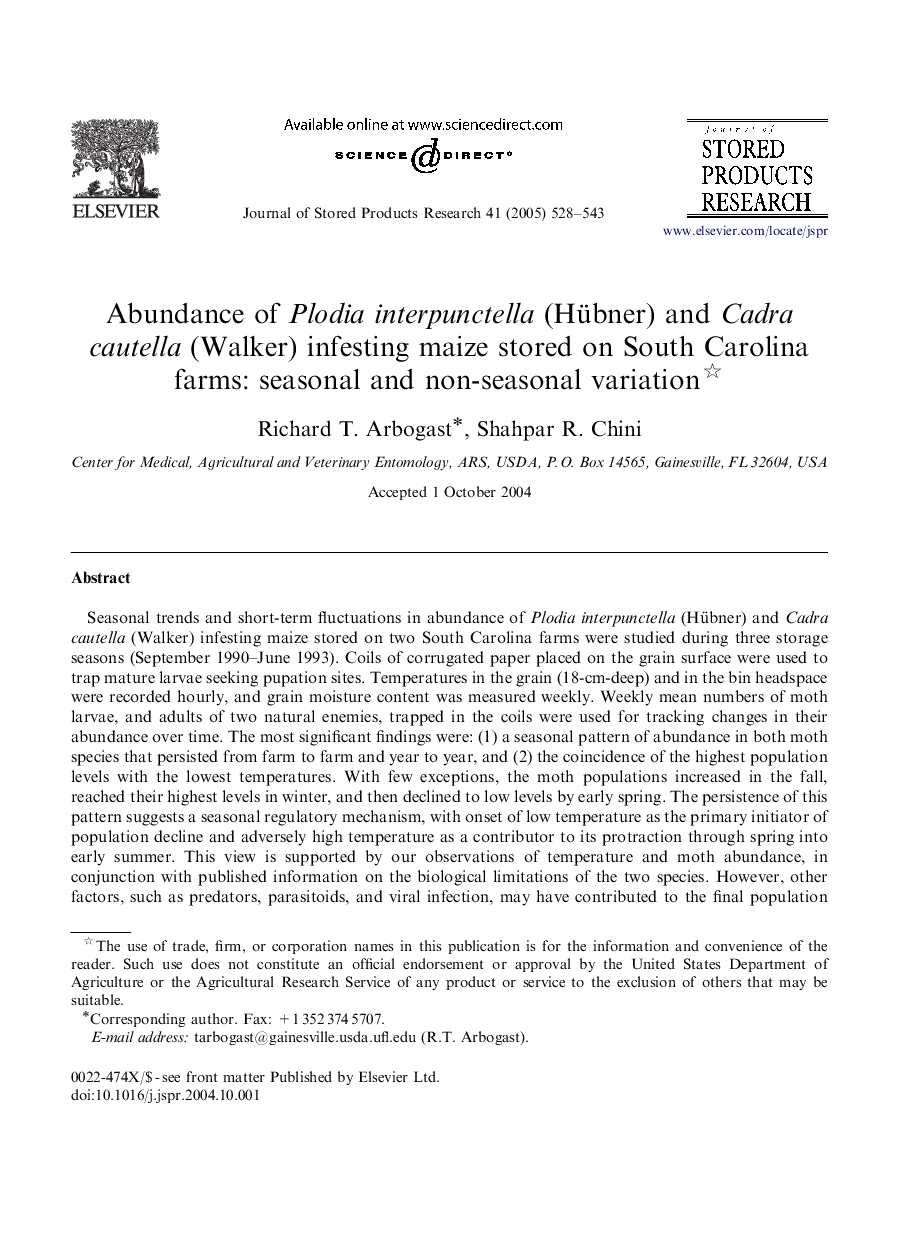| کد مقاله | کد نشریه | سال انتشار | مقاله انگلیسی | نسخه تمام متن |
|---|---|---|---|---|
| 9474896 | 1322556 | 2005 | 16 صفحه PDF | دانلود رایگان |
عنوان انگلیسی مقاله ISI
Abundance of Plodia interpunctella (Hübner) and Cadra cautella (Walker) infesting maize stored on South Carolina farms: seasonal and non-seasonal variation
دانلود مقاله + سفارش ترجمه
دانلود مقاله ISI انگلیسی
رایگان برای ایرانیان
کلمات کلیدی
موضوعات مرتبط
علوم زیستی و بیوفناوری
علوم کشاورزی و بیولوژیک
علوم زراعت و اصلاح نباتات
پیش نمایش صفحه اول مقاله

چکیده انگلیسی
Seasonal trends and short-term fluctuations in abundance of Plodia interpunctella (Hübner) and Cadra cautella (Walker) infesting maize stored on two South Carolina farms were studied during three storage seasons (September 1990-June 1993). Coils of corrugated paper placed on the grain surface were used to trap mature larvae seeking pupation sites. Temperatures in the grain (18-cm-deep) and in the bin headspace were recorded hourly, and grain moisture content was measured weekly. Weekly mean numbers of moth larvae, and adults of two natural enemies, trapped in the coils were used for tracking changes in their abundance over time. The most significant findings were: (1) a seasonal pattern of abundance in both moth species that persisted from farm to farm and year to year, and (2) the coincidence of the highest population levels with the lowest temperatures. With few exceptions, the moth populations increased in the fall, reached their highest levels in winter, and then declined to low levels by early spring. The persistence of this pattern suggests a seasonal regulatory mechanism, with onset of low temperature as the primary initiator of population decline and adversely high temperature as a contributor to its protraction through spring into early summer. This view is supported by our observations of temperature and moth abundance, in conjunction with published information on the biological limitations of the two species. However, other factors, such as predators, parasitoids, and viral infection, may have contributed to the final population collapse. Superimposed upon the seasonal trends were short-term, non-seasonal cycles of abundance with variable periods. Population theory suggests that predation, parasitism, disease, and competition may have produced these cycles.
ناشر
Database: Elsevier - ScienceDirect (ساینس دایرکت)
Journal: Journal of Stored Products Research - Volume 41, Issue 5, 2005, Pages 528-543
Journal: Journal of Stored Products Research - Volume 41, Issue 5, 2005, Pages 528-543
نویسندگان
Richard T. Arbogast, Shahpar R. Chini,